Pretty much anyone has the opportunity to launch their online business from scratch.
Whether selling goods or offering a particular service - a fair amount of dedication and creativity, combined with access to the right digital resources, will eventually grant your business a place in the market.
But, what separates small fish in the business pond from the big catches? In the online world, one major strategy becomes the key to estimating a business’s success - digital marketing.
Now, while enforcing digital marketing can have your business skyrocketing, measuring its efficiency can be a tad trickier - yet equally important throughout the tool’s implementation.
Read on as we give you an in-depth insight into the most important digital marketing metrics and help you measure the overall efficiency of your digital marketing campaign.
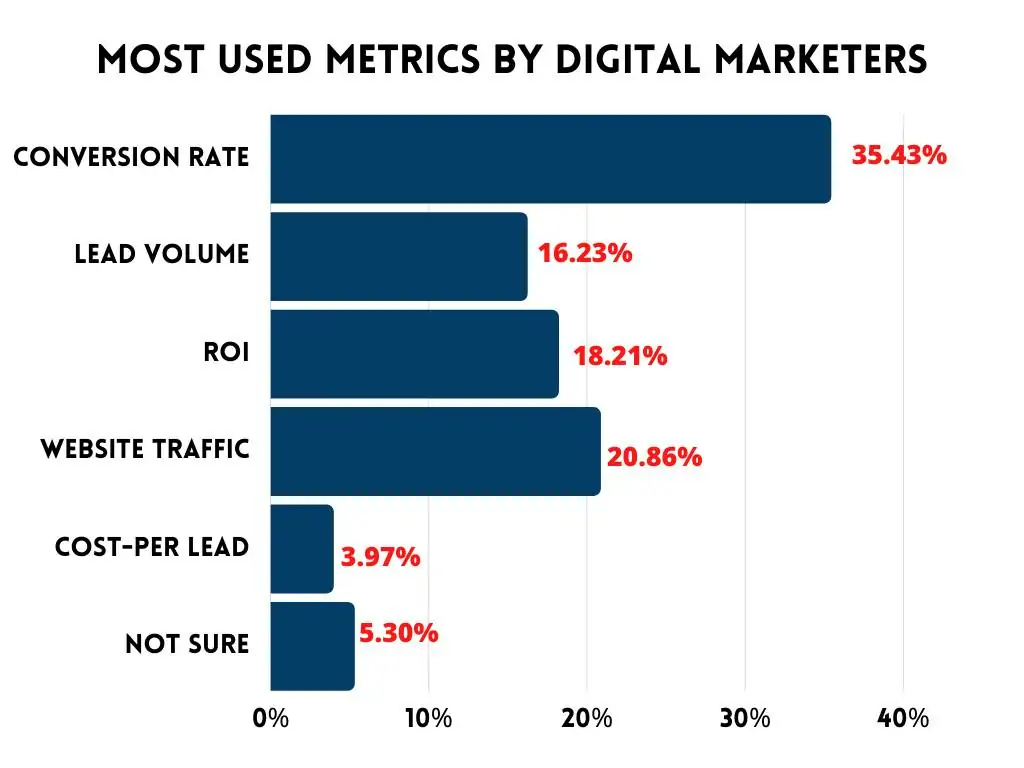
Digital Marketing KPIs
Without setting clear objectives and properly following your progress, your digital marketing campaign is bound to fail. That’s why understanding the nature of KPIs is essential in learning how to measure digital marketing effectiveness.
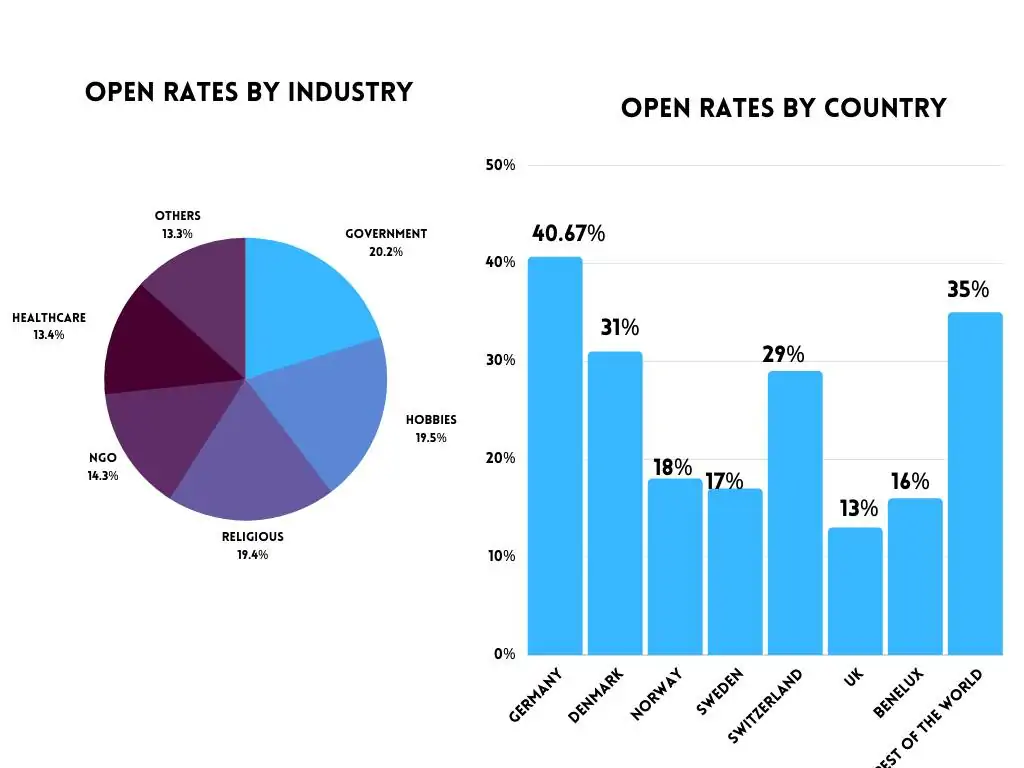
KPIs, which stands for Key Performance Indicators, are quantifiable goals that allow you to keep track of how successful your digital marketing campaign is. These digital metrics and analytics help you evaluate the progress and setbacks of your marketing strategy, therefore making you aware of what to keep or change about it.
Without further ado, let’s dive into the language of KPIs.
Track General Website Traffic
Your website is what ultimately represents you and your business in the professional world, so the amount of traffic it gets is the sum of your digital campaign’s overall success - your paid Google Ads, social media campaigns, or email marketing.
In order for your brand to leave a successful digital footprint, make sure you update your website design, take care of the coding, and regularly troubleshoot for any technical issues. The last thing you want is to repel your possible clients by slow loading, mobile incompatibility, or nonfunctional links.
Some of the most precise tools for measuring website traffic recommended by users include Semrush and Uprank.
Where Does Your Traffic Come From?
Now that you’re aware of the overall influence of your website, the next part of digital marketing metrics you need to become familiar with is to recognize the sources of said traffic.
There are four major types of traffic sources:
• Organic traffic: Organic visitors are those who come to your site “naturally” - through links in search engine results
• Direct traffic: This kind of traffic source covers users who access your site by inserting its URL in the address bar
• Referral traffic: These visitors reached you through a link from another website
• Social traffic: These users came to your site after finding out about you through the social networks
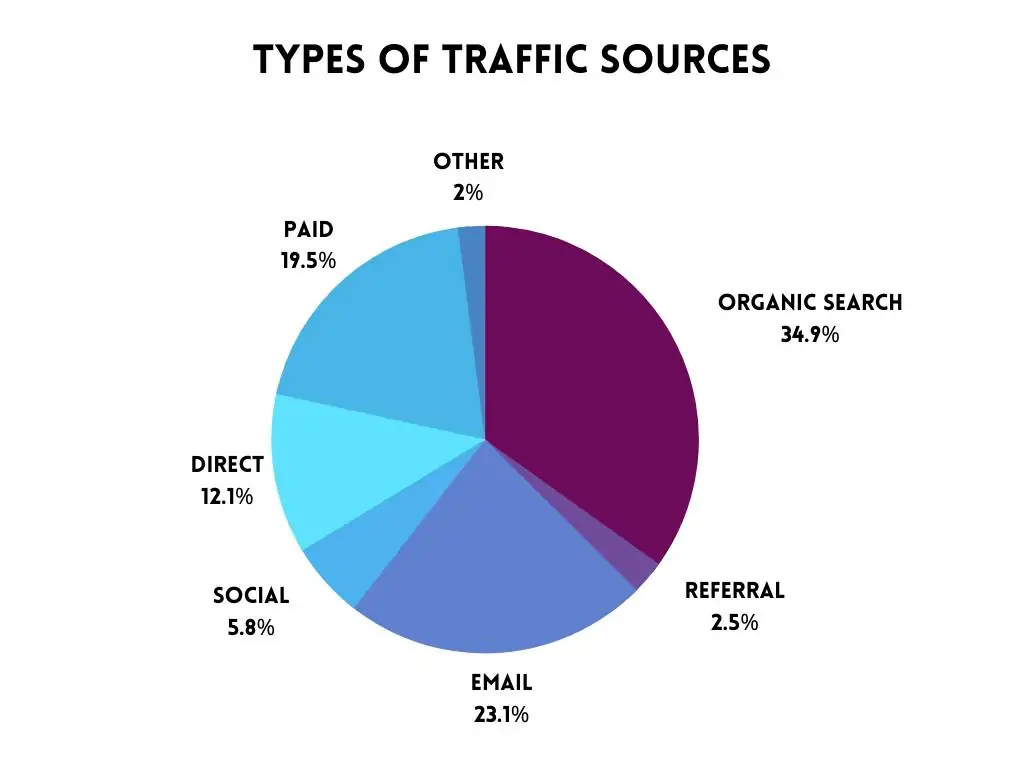
Recognizing your website’s most common traffic sources is an important part of learning how to measure digital marketing effectiveness. It will help you decide which parts of your advertising campaign you should focus on.
Acknowledge Your Influence: Sessions and Returning Visitor Rate
Another essential element of how to measure the effectiveness of a digital marketing campaign is monitoring sessions and the frequency of users coming back to your website.
A session represents the sum of all kinds of interactions and activities (browsing, downloads, purchases, shares) of a user on your website during a particular time span. Google Analytics narrows this time frame to 30 minutes.
So, session duration and the frequency of users returning to your website is one of the digital marketing metrics indicating the prosperity of your campaign. Depending on the type of content, the desirable session duration may vary.
Here are several steps you should take to make visitors stay longer on a multi-page website for your brand:
• Make your website user-friendly
• Enhance your formatting by optimizing the font and layout
• Add images, gifs, videos, graphs, sometimes even polls or quizzes to animate the reader
• Include links to other relevant pages
Additionally, statistics on new visitors and visitors returning to your website are part of the valuable digital metrics and analytics showing your content’s impact on your audience. Use them to evaluate the effectiveness of your strategy and improve your content quality.
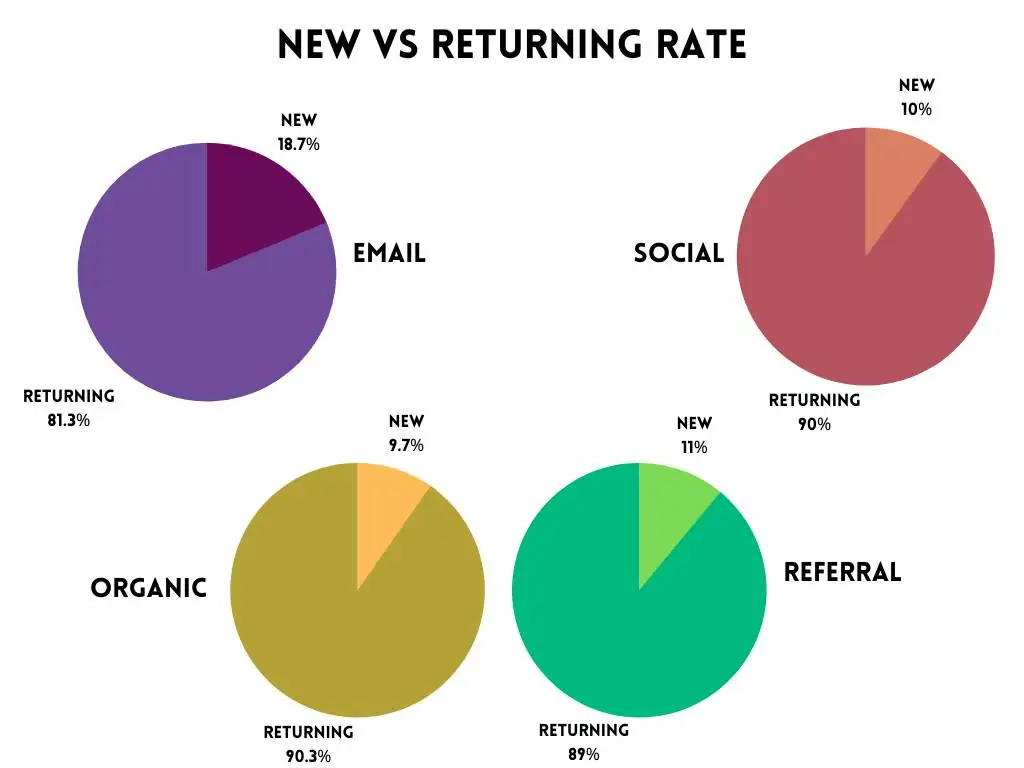
Returning visitors are already potential loyal customers - it is easier to spark their interest in purchasing a new product. In contrast, the flow of new visitors can show you the elements you should improve or change on your website.
Find and Prioritize Your Most Visited Pages
Having insight into your general website traffic parameters, you should dig deeper and determine the specific elements that keep your visitors’ attention. Determining your page views rate is one of the most crucial digital metrics and analytics, as it shows you the exposure imbalance between different elements of your website.
Once you detect the most valuable pages on your website, use online tools such as Behavior Flow report in Google Analytics or Hotjar heatmaps. They are a visual representation of traffic based on a color code and can help you further pinpoint the specific most engaging parts of these pages.
Exit vs Bounce Rate: Visitors Leaving Your Site
The next step of learning how to measure digital marketing effectiveness deals with the point when visitors leave your website.
First, let’s explain the difference between exit rate and bounce rate as vital digital marketing metrics. The exit rate shows the precise point where visitors leave your website. The statistics it entails are an important segment of digital marketing metrics because they help you identify the possible setbacks of your website and improve web design.
Unlike it, the bounce rate is another one of the digital metrics and analytics that deals with visitors who left your website immediately after clicking on a landing page. A high bounce rate indicates the presence of possible vital flaws you need to fix.
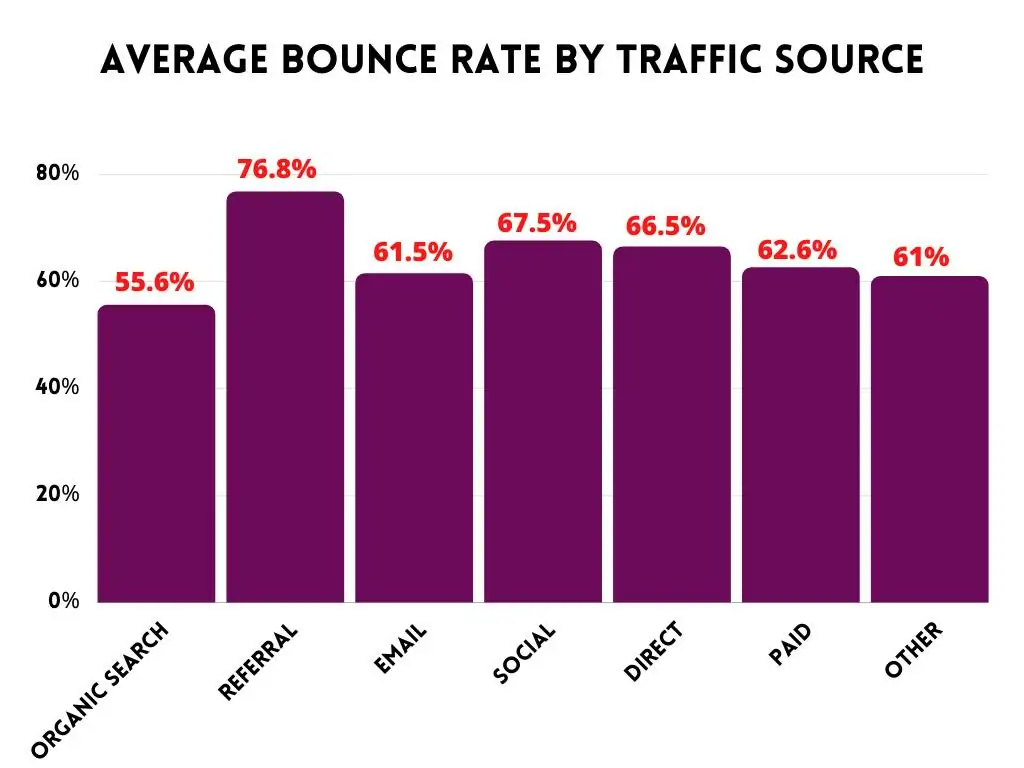
Here are some of the measures you may need to take:
• Choose a better, quick-loading, quality theme - free or paid. The WooCommerce themes for WordPress are an example of high-ranking and recommendable ones among SEO content writers.
• Compress the size of the images you use so that you avoid slow loading. Use tools such as Smart SEO Tools to optimize image size on your website.
• Improve your content’s relevance and simplicity. If the reader doesn’t find the information they need in a reasonable amount of time, they could lose interest on a whim.
• Pay attention to ads and external links that may distract the reader.
Conversion Rate: Visitors Turned Customers
Now that you are aware of how to measure digital marketing effectiveness, focusing on finding the shortcomings that put off your audience, let's look on the bright side of digital marketing metrics - identifying the rate of visitors that stay for good.
The conversion rate shows the percentage of visitors who completed a desired goal or action while scrolling through your website, such as filling out a form, making an appointment, or making a purchase.
Conversions (i.e. site goals) are divided into two main types:
• Macro conversions: the primary goals of your website, such as a completed sale
• Micro conversions: secondary, smaller steps leading to a primary conversion, such as subscribing to your newsletter
Experts consider it one of the value (as opposed to vanity) parameters among the digital metrics and analytics we’ve covered for obvious reasons - it shows the valuable interactions with your business that turn your visitors into customers.
An additional metric worth mentioning here is CTR - the click-through rate. It is defined as the ratio between the number of users presented with your ad on a certain medium and those of them who clicked on it.
As such, it represents the relevant observations with your ad that lead to an eventual conversion.
Other Digital Marketing Effectiveness Parameters
Where do people get the most exposure to online advertisements?
A further look into how to measure digital marketing effectiveness leads us to check on your campaign’s success on the most popular mediums.
So, let’s move on to some more digital marketing metrics you should become familiar with.
• Impressions: The purpose of this parameter is to quantify the overall amount of views a particular advertisement gets.
Whether you promote your business through Google Ads, YouTube Ads, or a social media campaign - impressions are the digital metrics and analytics that show you the coverage your business gets through these mediums. Impressions don’t include action - they are purely view-based and represent the number of times your ad was shown on a user’s screen.
• Social reach: This is a more specific metric that shows your marketing strategy’s effectiveness in the realm of social media (Facebook, Twitter, or Instagram). Valuable interactions by social media users may include likes, replies/comments, or if you’re lucky enough - shares and recommendations of your content.
• Email marketing reach: Finally, there is the number of times your ads render users’ screens through email.
People check their emails daily for very specific purposes, and it may be tricky to spark their interest. This is why you should pay special attention to the quality of your email marketing campaign’s content. Make sure the newsletter you sent for subscription has the informational and promotional value that would keep the receiver’s attention.
These metrics are often deemed vanity metrics, as they mostly deal with quantity over quality of engagement.
Nonetheless, taking them into consideration is useful because it shows the general level of brand awareness your digital marketing strategy manages to spread.
Profitability of Your Campaign
Okay, you have your goals set, and you analyzed all the parameters to keep in mind while planning your advertising strategy. But, what about the expenses? How does your digital marketing campaign reflect on your budget?
Last but not least, a crucial part of measuring digital marketing effectiveness is observing the profitability of your campaign.
For that purpose, let’s go through a final bunch of metrics:
• Cost Per Click: This metric represents the expenses you pay as an advertiser based on the number of individual clicks your ad gets. On average, a click should cost you ~$2. Your ad will be automatically removed as soon as you reach your daily budget.
• Cost Per Conversion/Cost Per Acquisition: While CPC measures the amount you spend for any conversion (both macro and micro conversions) on your website, CPA refers to the expenses you need to pay to actually sell your product or service to a customer. As such, some consider CPA the most valuable parameter in the sales industry for obvious reasons.
• ROI (Return On Investment): It compares the financial gain of your digital marketing campaign to its cost, thus measuring the overall profit or loss from your strategy.
This parameter is essential in acknowledging the profitability of your campaign.
Final Thoughts
In a world overwhelmed by advertisements, it isn’t easy to start raising proper awareness about your brand and sustaining its market visibility.
Do not hesitate - outline the main strategic objectives you want to achieve regarding the digital marketing metrics we mentioned as soon as possible. Also, don’t forget to include every member of your company hierarchy in the process - because teamwork is key!
Stay smart with your resources, but never tight-fisted - your brand’s visibility is crucial, and reasonable investments will eventually pay off.
With the proper level of dedication, creativity, and valuable teamwork - your brand should turn your target audience’s otherwise dull and annoying encounter with advertisements into an unforgettable, successful customer experience.
If you carefully went through the points made in this article, we hope you’ve got a clearer insight into the main points of evaluating the efforts of your digital marketing campaign. Hopefully, we managed to illustrate how to measure digital marketing effectiveness and teach you how to be a proper marketing guru!
